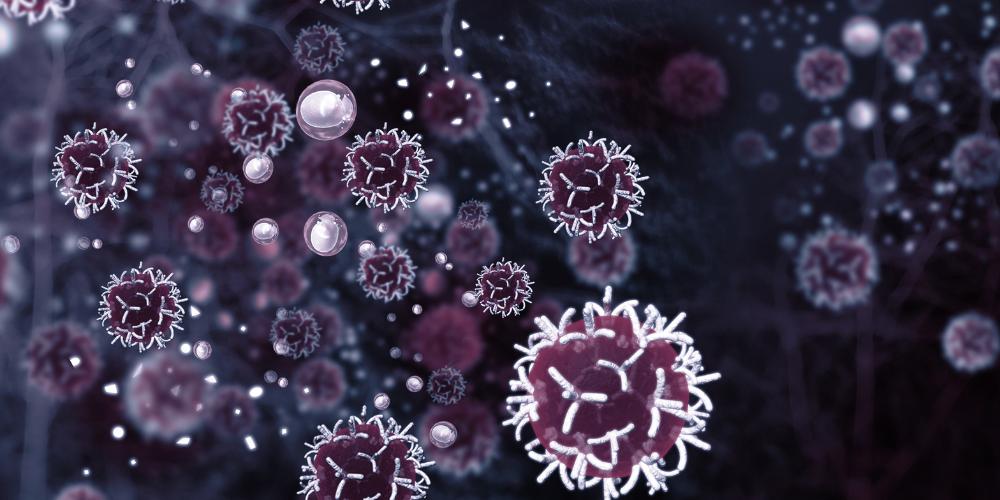Unlocking Precision Medicine, Tumor Heterogeneity and Patient Monitoring with Advances in Imaging
David Leung, MD, PhD, Head of Imaging, Daiichi Sankyo, uses his deep expertise in imaging to talk about the impactful advances in techniques that are making the biggest difference in immuno-oncology.

What innovative approaches in imaging are you seeing advancing immuno-oncology?
Two innovations stand out, and they are not mutually exclusive.
Molecular imaging, such as PET, utilizes specific radiotracers that can detect the presence/absence or dynamic changes of biomarkers relevant in cancer biology. These imaging techniques measure function in addition to anatomy and may enable earlier and more precise assessment of tumor response to therapy than changes in tumor size alone.
Advancement in image processing methodology, known as radiomics, allows reproducible quantification of many image features in routine CT and MRI that are otherwise difficult or impossible to reliably measure with human eyes. This technique can provide additional information that may translate into reliable prediction of treatment response and/or clinical outcome.
How is new imaging aiding in helping us understand tumor heterogeneity?
We first need to recognize that tumor heterogeneity is dynamic in nature. Cancers react to the environment and adapt to changes and to anticancer therapies. Traditional anatomy-based imaging focuses on morphologic tumor change. New imaging techniques, such as advanced MR techniques and PET utilizing relevant molecular targets, additionally capture spatial and temporal features of tumors.
For example, these techniques can explain why one lesion in a patient responds to anti-PD(L)1 checkpoint inhibition while another does not, because these two lesions have different PD-L1 expression levels.
Cancer does not stay static after treatment either; it reacts. We can use imaging to interrogate how expression of biomarkers changes in response to a certain therapy. Tumor biomarkers, for example, HER2, HER3, TROP2, PD-L1, and CTLA-4, to name a few, represent some of the key tumor targets/pathways, and the ability to observe these changes can (1) inform us how tumors change their molecular pathways, and (2) provide us insight on the next effective therapeutic choice.
How is imaging aiding in personalized approaches for treating patients?
As we discussed in tumor heterogeneity, one advantage of imaging is the ability to examine tumors in a patient non-invasively and in their entirety. While biopsies provide critical information about the tumor, each sample represents only a tiny part of, and plausibly only one of many, lesions. Consequently, target expression from biopsies may not match the expectation of a given targeted therapy because of tumor heterogeneity.
Another use of imaging is to provide adequate serial monitoring of response to therapy. Treatment response is essential for adjusting therapy and ultimately optimizing patient outcome. We now have ways to not only see tumor shrinkage, but also how it is shrinking. For instance, we can model tumor growth and regression dynamic mathematically via imaging to gain a better quantitative and qualitative understanding of treatment-induced changes in tumor biology.
What work can you share that’s an example of the power of imaging for immuno-oncology?
I presented data at IO360º on patients with brain metastases being treated with antibody-drug conjugates (ADCs) and monoclonal antibodies (mAbs). Patients with brain metastases are traditionally excluded from clinical trials because they tend to have difficulties tolerating some clinical trial processes. Moreover, biologics such as ADCs and mAbs were thought to be ineffective in the treatment of brain metastases because their large sizes prevent them from crossing the blood-brain barrier. In recent years, however, we have started to accumulate evidence, using a combination of conventional and advanced imaging techniques, to prove that indeed these new drugs can reach and treat these brain metastases effectively.
Consequently, we now have the opportunity to treat these patients with huge unmet needs: include them in clinical trials and hopefully get them hope for new treatment possibilities.
What is the tradeoff between imaging techniques and traditional pathology ones?
Essentially, the imaging and pathology datasets offer complementary insight. Imaging provides an overview of all the tumors in a patient from a macroscopic point-of-view. On a CT, you can interrogate all of the tumor sizes; on an MRI, you can also interrogate some molecular parameters such as diffusion and perfusion. On a PET, you can interrogate relevant molecular biomarkers.
Pathology, on the other hand, provides a much more in-depth microscopic molecular analysis from a physical tumor sample. One can have IHC or other techniques to quantify many different biomarkers, easily in excess of 20.
Even with advanced molecular imaging, we cannot interrogate as many biomarkers as IHC. However, we are able to see the whole body. Therefore, we need both the breadth from imaging and the depth from pathology to maximize the value.
How have advances in our understanding of cancer impacted imaging?
Since the 1970s, tumor response to treatment has been characterized by tumor shrinkage: tumor shrinks, good; tumor grows, bad. That was a very elementary way of looking at tumors. Occasionally, for example in immune therapies, tumors might initially grow with the infiltration of immune cells, before they eventually shrink. That leaves us in the disadvantaged position of not knowing the true impact of a therapy until months later.
Over the last 40-50 years, we have learned a lot about the behavior of different cancer types and now better understand that there is no one-size-fits-all solution for detection, diagnosis and therapeutic monitoring. Specifically, we have started to realize that size is only a component of treatment response evaluation. Advanced imaging techniques, such as those we discussed, allow us to interrogate not just tumor size but also their biological characteristics, so that we can make therapeutic decisions more quickly and more accurately.
What are the questions in immuno-oncology that you would like imaging to answer?
I would like to see imaging improve on prediction of treatment outcome and patient's survival. Specifically, imaging should be integral to, and not only just integrated into, clinical care. Combining imaging and clinical (non-imaging) data such as biopsy, blood biomarkers etc., can better help development of predictive and prognostic tools – predictive for therapy, and prognostic for survival, than either one alone.
I also touched on radiomics and molecular imaging, which involves extraction of different quantitative features from CT, MR, or PET images. In combination with machine learning algorithms, these datasets can help us to predict response to treatment, risk for recurrence and patient survival.
Ultimately, I hope these techniques, in optimal combination, can help clinicians and patients to make informed decisions about treatment strategy and expectation.










